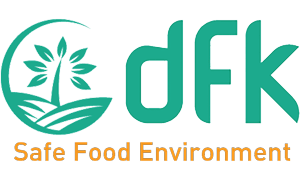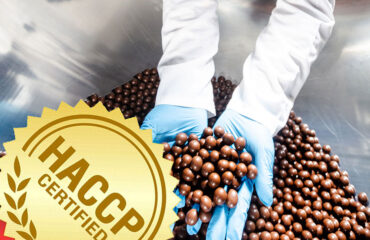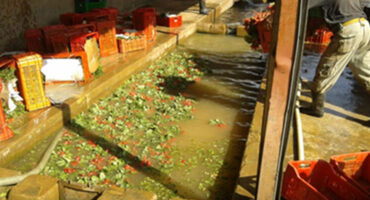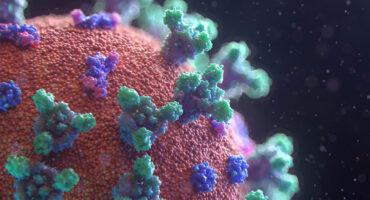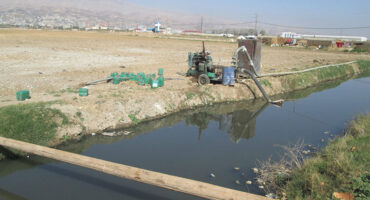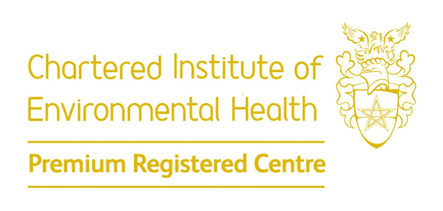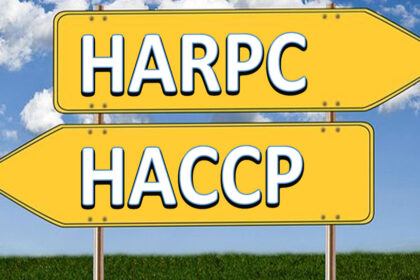
“What is the difference between the Hazard Analysis and Critical Control Points (HACCP) and the Hazards Analysis and Risk-Based Preventive Controls (HARPC)?” is a question we often hear from professionals working in the food industry and expected to be raised more often having been involved in managing the food safety systems based on the HACCP concept which is universally accepted by government agencies, trade associations and the food industry around the world ( NACMCF, 1997). HACCP is based on the analysis and control of biological, chemical, and physical hazards from raw material production, procurement and handling, to manufacturing, distribution and consumption of the finished product in order to reduce the risks of safety hazards in food. It is based on 7 principles:
Principle 1: Conduct a hazard analysis.
Principle 2: Determine the critical control points (CCPs).
Principle 3: Establish critical limits.
Principle 4: Establish monitoring procedures.
Principle 5: Establish corrective actions.
Principle 6: Establish verification procedures.
Principle 7: Establish record-keeping and documentation procedures
The HARPC is based on these same basic food safety principles; more specifically, it recognizes the importance of hazards analysis and setting critical limits to monitor the control points; it emphasizes the corrections/corrective actions, verification activities and the recall plan. The preventive approach is not recent, it dates back to the 60’s when the HACCP was pioneered by the Pillsbury corporation to ensure food safety for the first manned National Aeronautics and Space Administration space missions. NASA’s main concerns were to ensure safe food for astronauts. The WHO Europe recommended the system in 1983 and the Codex released the first HACCP Guidelines which was revised in 2001 and adopted by the FAO/WHO Codex Alimentarius Commission. The U.S.National Advisory Committee on Microbiological Criteria for Foods (Committee) reconvened a Hazard Analysis and Critical Control Point (HACCP) Working Group in 1995. The primary goal was to review the Committee’s November 1992 HACCP document, comparing it to current HACCP guidance prepared by the Codex Committee on Food Hygiene. The Committee again endorses HACCP as an effective and rational means of assuring food safety from harvest to consumption. NACMCF issues the third revision document in 1997.
Basically, the HACCP was integrated into the official regulations in the European Union and the United States. For instance, the U.S. Food and Drug Administration adopted HACCP in low acid canned foods, then the FDA mandated HACCP for seafood products and in 2001 for juice processors. The Council Directive no. 91/493/EEC places the responsibility of product safety on the industry as it introduced the concept of ‘own checks’ and Critical Control Points during processing and the Commission Decision 94/356/EEC details the rules for the application of the HACCP system.
The term HARPC goes back to 2011, when the Food Safety Modernization Act (FSMA) was signed into law by President Barack Obama. FSMA directs FDA to establish standards for adoption of modern food safety prevention practices by those who grow, process, transport, and store food. In 2015, FDA has finalized seven major rules to implement FSMA; the Hazards Analysis Risk-Based Preventive Controls for Human food is one of those 7 rules which is also referred to as The Preventive Controls for Human Food (PCHF). The Hazards Analysis Risk-Based Preventive Controls for Human food (HARPC) requirements specify that a facility must prepare, or have prepared, and implement a written food safety plan (FSP) (21 CFR 117.126).
The elements of the FSP are (21 CFR 117.126(b)):
- Hazard analysis
- Preventive controls (see 21 CFR 117.135), as appropriate to the facility and the food, to ensure safe food is produced,
- Procedures for monitoring the implementation of the preventive controls, as appropriate to the nature of the preventive control and its role in the facility’s food safety system
- Corrective action procedures, as appropriate to the nature of the hazard and the nature of the preventive control
- Verification procedures, as appropriate to the nature of the preventive control
The preventive controls approach to controlling hazards used in an FSP is developed based on the risk-based HACCP principles as described by the National Advisory Committee on Microbiological Criteria for Foods
It is important to note that the preventive controls approach to controlling hazards used in an FSP is developed based on the risk-based HACCP principles as described by the National Advisory Committee on Microbiological Criteria for Foods. Therefore, there are similarities between the FSP and a HACCP plan and the similarities are in the essence of both systems; both adopt the preventive approach , yet there are few differences. Table 1 shows the different elements required in each of the plan and how they differ:

In HARPC, A “hazard” is any biological, chemical (including radiological), or physical agent that has the potential to cause illness or injury. These include hazards that occur naturally, that are unintentionally added or that may be intentionally added to a food for purposes of economic gain (i.e., economic adulteration). Contaminants that have no direct impact on the safety of the products are considered “undesirable defects” and do not require a preventive control, hence they should not be included in the FSP.
Once the hazards requiring preventive controls are identified in the Hazard analysis, the FSP should include documentation of the preventive controls that were determined as appropriate to controlling the hazards. The preventive controls include:
- Process controls
- Food allergen controls
- Sanitation controls
- Supply-chain controls
- Recall plan
- Other controls
The CCP is a point, step or procedure at which controls can be applied and a food safety hazard can be prevented, eliminated or reduced to acceptable (critical) levels.
In a HACCP plan, the CCPs are steps in the process that are always monitored, whereas in the FSP, not all preventive controls are CCPs (Process controls), hence the preventive controls are only monitored as appropriate to the nature of the preventive control and its role in the facility’s food safety system. That means some preventive controls that are not necessary applied at CCPs may not be monitored such as the supply chain preventive control and recall plan.
The FSP incorporated the element “corrections” in addition to the corrective actions that are essential to identify the problems and prevent them from recurrence whenever there is a deviation from the critical limits and a loss of control. However, in some cases, problems are minor and do not have an impact on the safety of the food, in this case corrections activity in a timely manner is appropriate and evades the processor the extensive documentation and procedures related to the corrective actions.
In the HACCP plan, the verification activities are limited to CCPs (process controls) to ensure that the HACCP is being implemented and followed as per the plan and that the process controls the hazards. In the FSP, verification activities are applied to process and other preventive controls (remember: not all preventive controls are process controls (CCPs)); therefore, the verification activities are as appropriate to the food, the facility and the nature of the preventive control and its role in the food safety system.
Finally, when a hazard requiring a preventive control is identified in the hazard analysis, a food recall plan must be documented. All elements included in the FSP should be documented and records of the preventive controls and of the implementation procedures (monitoring corrective action, verification) should be kept for two years.
Additional details on the above, how to identify the hazards, methods to determine the preventive controls, the roadmap to build your FSP, the functions and important role of the Preventive Controls Qualified Individual (PCQI) will be discussed in the FSPCA PCQI training that will be held in Hannover Germany in August 27 – 29 2018 and October 29 – 31 2018 and in Beirut, Lebanon in October 2 – 4 2018.
BOOK YOUR PLACE ! The deadline for booking for August training is 13 July 2018. For more details on the program, follow the link here.
Are the dates inconvenient? Stay in touch to be updated on upcoming PCQI courses by subscribing to the newsletter https://dfkfoodsafety.com/food-safety-modernisation-act/ . There is also the option for an in-house training which can be arranged at the time that is suitable for your employees.
FAO 2003. Assessment and Management of Seafood Safety and Quality. FAO Fisheries Technical Paper 444. http://www.fao.org/docrep/006/y4743e/y4743e0i.htm
NACMCF (National Advisory Committee on Microbiological Criteria for Foods) 1997. HAZARD Analysis and Critial Control Point Principles and Application Guidelines. Journal of Food Protection 61, 762-775.
FDA 2018. FSMA Final Rule for Preventive Controls for Human Food. Current Good Manufacturing Practice, Hazard Analysis, and Risk-Based Preventive Controls for Human Food. https://www.fda.gov/Food/GuidanceRegulation/FSMA/ucm334115.htm
